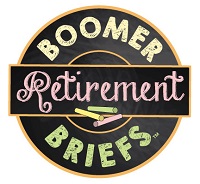
Well, it’s here (again). That dreaded day when the stock market goes barreling downhill like an Olympic Super-G alpine ski racer. Typical in the investment industry is hyped-up jargon that leads to hoopla and headlines. For examples, on headline was “Market Drops – The Largest in Years!” Another was “Bear Market – On My!” And, let’s not forget these gems: “The Market Plummets! The End of the World As We Know It!”
Those kinds of headlines would make anyone nervous! But it’s all about what you do when the market drops. Are you logging in to your financial accounts to assess the damage? If so, it’s time to log out, make a pot of tea, and have a seat at the kitchen table. Take a minute to remember the basics of investing and the importance of sticking to your plan. Just because the market is taking a dive at this moment does not mean you need to panic. Repeat. You don’t need to panic.
Take a seat at the kitchen table as the market drops
Dan and I sat at the kitchen table with a copy of the Wall St. Journal and USA Today recently. We took a look at the graphs and the headlines. The investment markets were certainly making a statement. We read a few articles looking for underlying causes that might create such upheaval. We talked about things like how the better-than-expected jobs report was actually a problem for “investors.” And continued with how higher interest rates could be a negative. These are situations that seem like they should have a positive impact on the markets. Yet, they cause concern and uncertainty among investors.
Markets drops and market gains are much like dieting
Personally, I look at market volatility like dieting. Have you ever been in the situation where you lost quite a few pounds on a diet? As a result, you felt that it was a great accomplishment. Then, to celebrate, you ordered a burger and fries along with a chocolate milkshake! And, you said “yes” to the bacon and cheese on that burger — thank you very much! After all, you shed some pounds so now you can live it up. And up the scale goes. Those pounds packed on so darn quickly after you slid easily back to your old habits. After all, burgers are among your favorite foods.
Nutritionists refer to the ups and downs of weight loss and gain as “yo-yo” dieting. You’re way down, you’re way up, way down, way up. It’s a vicious, emotional cycle that many of us deal with throughout our lives. We acknowledge it happens. But rather than get on the scale every morning to assess the real “damage” of aforementioned cheeseburger, we don’t look. Instead, we order a salad for lunch and try to get on track with more consistently healthy eating. That’s the right approach. Don’t knock yourself for the slippery slide down. Instead, look forward and move ahead.
The market is like a yo-yo diet
The yo-yo diet is what the market does as well. The ups and downs are just a natural part of the economic cycle. It’s how you react to the market drops that really matter. How are your actions impacting your long-term financial well-being? What about implications to your financial goals? Not to mention your financial peace of mind?
It’s incredibly frustrating to hear people say they cashed out of the market because they couldn’t take the stress. It felt too risky to stay the course. So, they took their money out. Oh no! Not that! It’s like ordering a sheet cake with extra frosting when you only needed a cupcake! It’s a much too extreme approach to investing. Just because the market drops doesn’t mean you need to take any action whatsoever. And certainly not any extreme action.
Sit tight. Don’t look at your accounts. It doesn’t matter what their valuation is today. It will be different tomorrow. You just don’t know if it will be better or worse. Just be aware and breathe.
Who are “investors”?
Here are some pieces of information that may make you feel more in control when the market drops. Or when it does its yo-yo thing. The first important piece of information is understanding that “investors” are not you and me.
The financial industry has been calling us regular folks “investors” for some time. This is a result of us buying and selling securities and mutual funds in our IRAs, 401(k)s and 403(b)s. Relatively speaking, we invest in nickels and dimes compared to the billions of dollars invested by large institutional investors and money managers.
When the market moves in substantial directions – – both down and up – – it means that big players are in the game. These professional investors are buying or selling in billions of dollars. They base their trades on underlying factors that they research and forecast every day. It might be they think inflation will increase, causing a surge in consumer prices. Or, they might think cash will become too expensive to borrow. After all, they deal in the millions and billions of dollars. And, they spend more capital if interest rates go higher.
These institutional investors are the ones that move the market, not you and me. So, you really can sit by calmly and drink your tea.
Market corrections and recessions are good things…
…just not always for you, personally. Anytime pressure builds up in any system, there needs to be a release. Think about how a pressure cooker on the stove works. It hisses and spews steam and seems like the lid is ready to blow off. It has to release some of that internal pressure.
The “financial markets” is this generic term we all think we understand. But, really, we don’t understand it completely. There are thousands of ingredients that make up the financial markets. From time to time, the whole stew simply boils over. Institutional investors move aggressively, quickly, and in gigantic blocks of trading. This allows for a of release some of the pressure in the financial cooker. The underlying system needs to reset from time to time. That’s in order to get ready for the next stage of the climb. It’s like waiting it out after Thanksgiving dinner before diving into the pie.
Consumers cannot time the market correctly
It’s been proven time and again that consumers, as a collective group, do exactly the wrong thing at the worst time. Specifically, when it comes to making financial investing decisions. When the market tanks, consumers sell. When we’re feeling like the market has made a good recovery, we buy.
This kind of “feeling and thinking” is the worst kind of investment strategy. Instead, you stay put during these inflection points. Set up an appropriate plan for your money. The results will be clear. You’ll have a lot more dollars when it comes time to pay that tuition bill. Or when you’re ready to retire with confidence.
Again, it’s the same idea as eating the wrong foods in the wrong quantities at the wrong times. Then wondering why the scale is nudging up rather than down. Honestly, it happens to the best of us! It’s the yo-yo diet.
The proof is in the numbers
The data are simply staggering. They clearly show how badly individual investors invest. So badly that I had to break out the chocolate just to continue writing! Here’s the reality of consumers trying to be investors:
In no period of time EVER have consumers beaten the indexes. For example, in 2016, average consumer “investors” saw returns on their equity funds of 7.3%. Not bad, right? But, the S&P Index pulled in almost 12% returns!
My personal favorite is that over the last 30 years, consumer “investors,” on average, saw returns on their own investments of almost 4%. Guess what the S&P Index did? Yep, 10%.
The headline to the article you might want to take a look at reads, “Investors Suck at Investing”. Don’t be offended. Most consumers are not good investors. Or for that matter, successful dieters.
If you consider that even the professionals who do nothing but try to figure out where the market is going every single waking minute of every single day can’t get it right, how the heck are we supposed to?
But do not despair. There are three specific actions all of us individual investors should do as part of our financial recipe. How many of these do you do?
Identify your broad goals by time period
It’s critical to remember the golden rule of investing. Only put money into the market that you can afford to lose. If you need to buy something next year, that is money not available for market exposure. There are three investing time periods to consider for your own financial goals:
- Short-term: I need a new car next year. Or, tuition payments are due in 2 years. This is not money that should be exposed to the market. Move it to cash or extremely short-term investments such as CDs.
- Mid-term: I’d like to take a European vacation in 3 years. This money should not be in the equity market. Instead, consider other financial options with significantly less risk.
- Long-term: I want to retire in 10, 20, 30 years. This is the money you invest in a well-diversified portfolio that includes exposure to the stock market. When the market drops in these long-range accounts, there is plenty of recovery time before you’ll need it.
Set up an investing plan for each goal
Short-term = cash. No exposure to the market. You’re going to spend that money soon. This would include your emergency fund funds. (I recommend a full year of spending as an emergency fund, if you are wondering.) This is also the cash you need to pay for immediate goals such as this summer vacation and Christmas 2018.
Mid-term = safer investments. Short-term bonds. Municipal bonds. Target date funds set to the year you’ll need the cash. You’ll need the money relatively soon, but still can benefit from some shorter-term investing strategies. A target date 2020 might be a good option as of this month.
Long-term = well diversified, correctly determined asset allocation. You first need to know whether you’re an aggressive investor, a balanced investor, or a conservative investor. Otherwise, you will have a problem, both emotional and financial, when the market drops like a rock. Your financial adviser can help you figure this out. Or, use the many tools offered by top-notch investment organizations online.
Once you know your investing self, you can create an asset allocation plan according to your goals, your time horizon and your tolerance for risk (emotional consideration).
Reset your assets back to the goals every year
More simply, this means you need to make a change to your investments when the time horizon gets shorter.
College savings is a great example. Let’s say you started saving when Junior was 8. You have 10 years to save and invest. Then you’ll need cash to pay tuition. Cash. That’s all a university takes as payment. Say you’re going to need about $50,000 in 10 years for the first two years of college. (Or, maybe just the first year. Ouch!) You start your investing with a long-term horizon, 10 years. But, after 5 years, you’re now in mid-range. As a result, you need to shift a big heap of that money to mid-term, safer investments. By the time college tuition is due in 2 years, you should be almost all in cash. If the market tumbles six months before Junior goes to college, the tuition is still due. However, if you invested incorrectly, you could be short by about $25,000. That is not good.
A last note
Somewhere along the line, we’ve over-complicated investing for the individual investor – you and me. But, in fact, it’s not that hard.
Understand some of the basics. Make the right choices based on your goals, time horizons, and ability to handle market risk. Know that you won’t lose any money unless you cash out in a market downturn.
All kinds of investors have to be willing to ride out the market’s yo-yo features. It’s like being on a perpetual diet. Some years you lose some pounds, some years you gain. Just try to get into healthy habits and stick to the plan. Who’s ready for a salad?




